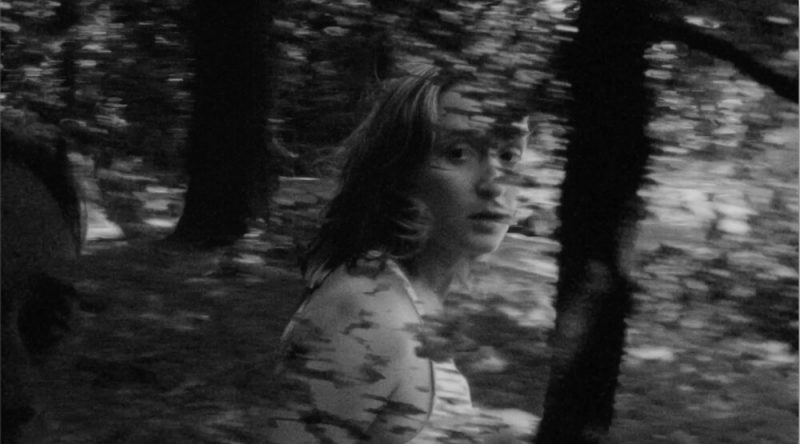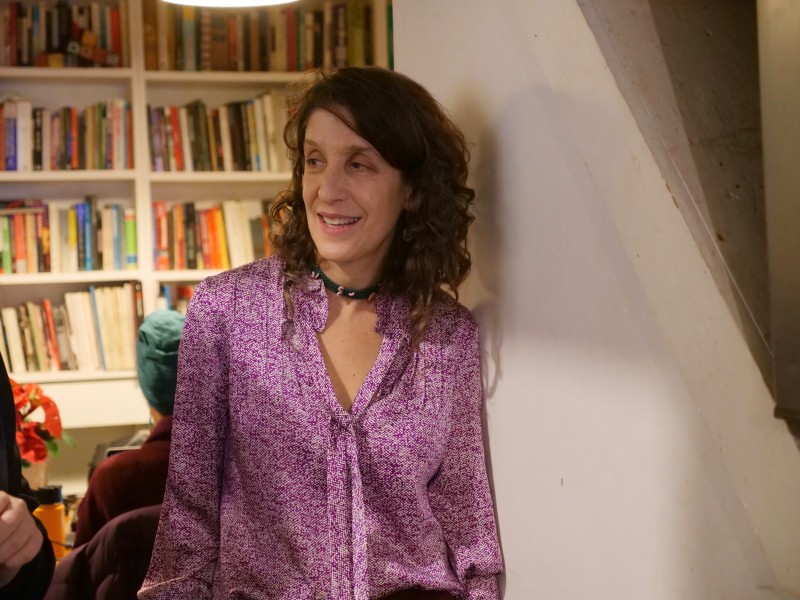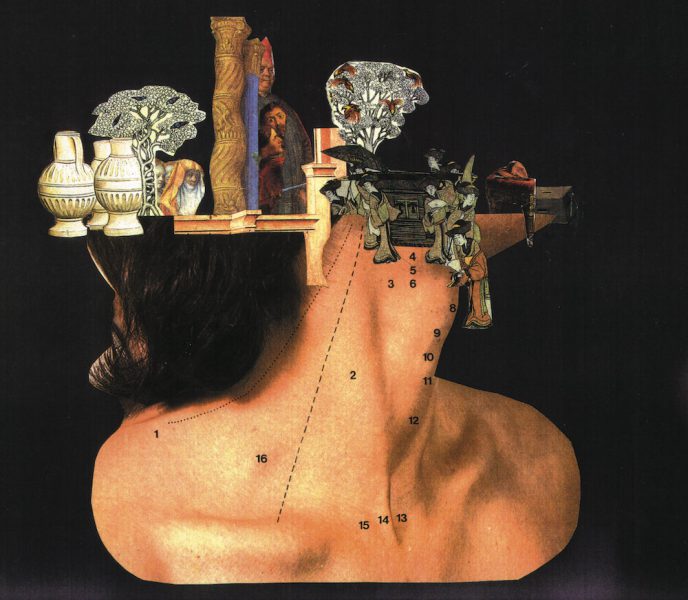
E. Nina Rothe
January 12, 2021
https://www.eninarothe.com/faces/2021/1/6/lynne-sachs-between-thought-and-expression-and-why-you-cannot-miss-her-momi-retrospective
In-depth interviews and casual chats with the personalities and influencers of today, yesterday and tomorrow.

A still from the short ‘Maya at 24’ by Lynne Sachs
“Lynne Sachs: Between Thought and Expression” and why you cannot miss her MoMI retrospective
All the great filmmakers have been artists of the lens. If you think about Hitchcock, Truffaut, Wilder, Kazan, Visconti, Fellini and endless more that make up our collective cinematic heritage, they constructed their work like one long sequence of aesthetics — sight and sound.
Lynne Sachs is no exception. While effortlessly flowing between documentary, experimental and narrative styles, Sachs’ films — whether 4 minutes long or full length — reward the adventurous viewer with a sense of beauty, elegance and joie de vivre. And I say “adventurous viewer” because it may have been difficult for non-urban audiences to catch the prolific artist’s work.
Until now that is. While in the past someone like me had to rely on the cool publicist devoted to Sachs and her films to point me in the direction of her next screening at a festival or inside a hip city venue, this January the Museum of the Moving Image has organized a wonderfully comprehensive retrospective of Lynne Sachs’ cinematic work. Beginning on January 13th and streaming online this proves a rare treat, since Sachs’ films are perfect for the kind of intimate viewing we are relegated to these days. Watch one, switch it off, talk about it with your family or friends, share your views online with the larger social media community — Sachs is the filmmaker of the times and how appropriate for her retrospective take place now!

Lynne Sachs photographed by Abby Lord, used with permission
So what makes Sachs’ work so unique? When I met her in person, right before our current pandemic and at the screening of her latest film at MoMA in NYC, she struck me as a rare combination of kind, unconventional and courageous. And her clothes betrayed the kind of effortless elegance that makes her films so appealing. Her voice, so often the soundtrack of her work, feels familiar even the first time you hear it, like that of a best friend who calls just to see how you’re doing. And in doing so makes the world a better place.
To me, Sachs is an artist, a visual explorer of the beauty that is hidden in cinema, for only a few to figure out. But I wonder how she views herself, as an artist or a filmmaker, or even a poet? She answers via email from NYC, kind as ever. “When you add the word “hidden” to the word “beauty”, I really start to get interested. Lately I have been thinking about certain images that, like our bodies, are growing old with the dignity of their own life span, their provenance. These are the kinds of images that reveal their journey and don’t pretend to have appeared on this earth, or more precisely on our screens, in the year 2021.” She continues, “artist and cultural theorist Hito Steyerl writes eloquently and perceptively in her essay “In Defense of the Poor Image” about the way that images from the past move into our present by carrying the baggage of time. I like seeing the dirt, rust, and wrinkles that tell a story in a purely visual way. When I see images that insist on carrying slivers of their past –- be it joyous or traumatic –- I see beauty.”
The retrospective includes some of Sachs’ earlier work, shorts and mid-length films about her children, the world around her, art, poetry, feminism — her own brand of the stuff — and science. It’s divided into five programs — Early Investigations, Family Travels, Time Passes, Your Day Is My Night and Tip of My Tongue — plus a special online screening of her latest feature ‘Film About a Father Who’ which is a personal favorite and a must-watch for anyone wanting to learn more about Sachs and her fascinating family. You can find my personal review of it here.
There is a Michael Apted feel to her work which often revolves around family, or rather those who are important in Sachs’ life, shot over a long period of time. I’m thinking of the shorts which star her daughter Maya at around 6, in her teenage years and then again at 24. What a treat they are but also a wonderful way to examine the constantly changing pattern of our lives. So I ask Sachs how she’s seen the pandemic change things, as related to her work-in-progress with Maya and she surprises me. “Now this is an intriguing way of asking me about the pandemic, through a film about my daughter Maya that I have essentially shot three times over the course of twenty years. When she was six I made ‘Photograph of Wind’, at sixteen I made ‘Same Stream Twice’ and at twenty-four I made ‘Maya at 24’. What I think you are getting at is an epistemological question about the meaning of time.” Yes, she gets me, she really gets me! She continues, “in this period of sheltering-in-place or at least quasi-isolation, many of us are wondering how to register our days. Is there going to be an end? Or are we caught in a constant, traumatizing, unending middle? We are all aging at the same rate; we register each day in the same way. In these three films (each between 3 and 4 minutes), I asked Maya to run in circles around me while I was filming her with my 16mm camera. We both stare at each other the entire time. Dizzying as it may be, we are together exploring our relationship through our eyes. Without touching, we are as intimate as a parent and child can be. During the pandemic, as I communicate with my own mother from hundreds of miles away using the virtual technology available to us, I must remember that this form of contact might not be great, but it is good enough.”

A still from ‘House of Science’ by Lynne Sachs
Elements of her feminist spirit, but not the extremist kind we see these days rather a more inclusive approach, also permeate Sachs’ work. It’s a breath of fresh air to see a woman filmmaker explore our bodies, our minds and our sexuality on screen. And what a wonderful surprise to find out that Edo Choi curated for the Museum of the Moving Image this comprehensive retrospective of Sachs’ work. As both a lover of film and a film writer, Choi makes the perfect conductor for our journey in the midst of the filmmaker’s opus. So as a final question I asked Sachs how it feels to have a retrospective of her work at MoMI, especially now.
“Scary, vulnerable and exciting,” Sachs admits, mentioning Choi right away. “Today, I was working with the Museum of the Moving Image’s marvelous, insightful, and dedicated assistant curator Edo Choi on some technical aspects of the program. You see when you are dealing with film files that were created over thirty years, they might not be compatible, on a technological, thematic or conceptual level with other films that you recently completed. I mentioned earlier what we all know –- time runs in seconds, minutes, hours, days, months, years. It does not change. But technology does, at least in the world of video. So, some of my files run at 29.97 frames per second, some at 23.98 fps and some at 24 fps. It all depends on when the films were born! This makes it very hard to stream them together.” What does that mean to a filmmaker? She explains, “maybe this is telling me something about myself, what was on my mind back in 1986 may be very different from what I am thinking about in 2021. To my surprise, I do see themes that connect me to who I was at 25 and who I am today at 59. When people watch the films, I hope they can find some of these threads that carry through all of the work. I am not going to say here what I see, because I am very interested in finding out what viewers discover on their own.”
To watch Lynne Sachs’ work check out the Museum of the Moving Image website. The retrospective runs from January 13th to the 31st, 2021.
